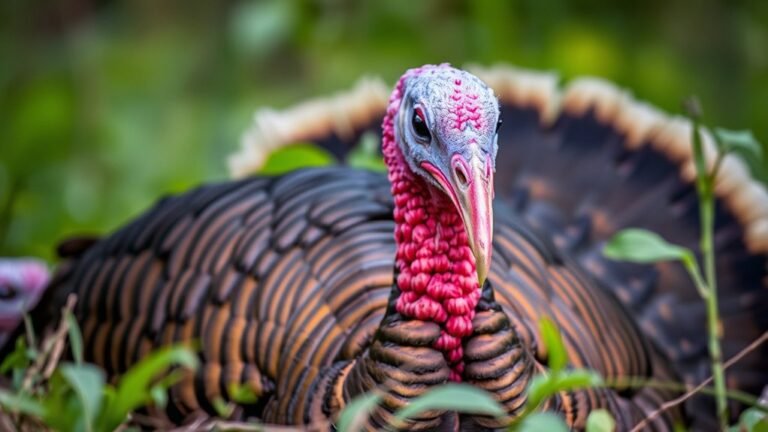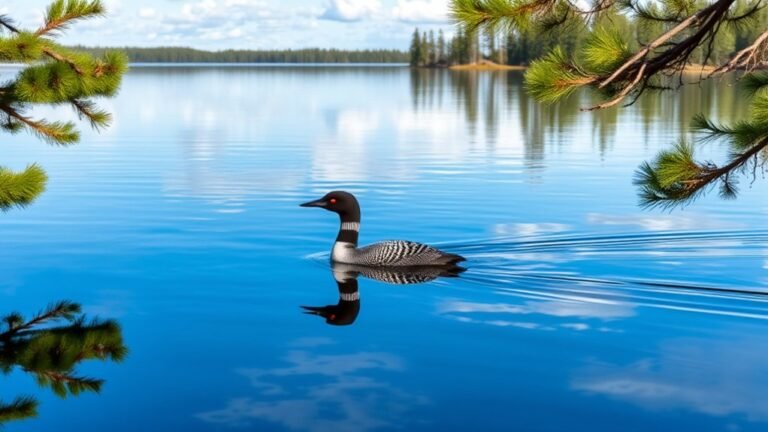What Do Crows Eat? Understanding Their Diets
Crows are smart birds, and they eat many different types of food. As omnivores, they can adjust their diets based on what is available around them. This means they can eat what's in season or what they find easily.
In cities, crows often eat leftovers that people throw away. They enjoy food scraps like bread, fruit, and even some meats. Outside of cities, they hunt insects, catch small animals, and find seeds and nuts. Their ability to eat so many things helps them live in different places.
Crows play an important role in the environment. By eating waste and hunting pests, they help keep nature in balance. Their diet shows how well they adapt to changes around them, especially in urban areas. So, the next time you see a crow, you can appreciate how clever they are in finding their meals!
A Quick Overview
Crows are omnivores, which means they eat many different kinds of food. Their meals include insects, fruits, seeds, small animals, and even dead animals.
Crows are clever and often look for leftover food from people. This shows how they take advantage of any food source they find.
The food crows eat changes with the seasons. In spring, they like to eat insects. In summer, they enjoy berries. When winter comes, they often go for nuts or seeds.
Where crows live also affects their diet. In cities, crows often eat food from humans. In rural areas, they may eat crops from farms.
Crows are important to nature too. They help clean up by eating dead animals, control pests by eating insects, and spread seeds when they eat fruits and nuts. This helps keep the environment healthy.
The Omnivorous Nature of Crows

Crows are much more than just scavengers. They're true omnivores with a wide range of food choices. Crows can eat many different things, which helps them survive in different places. They can be found in parks or fields, searching for food everywhere.
You might see crows digging through trash cans. But they also find and eat insects, collect seeds, and sometimes even catch small animals. This ability to find food in many ways shows how smart and creative they are.
When you watch crows looking for food, you can see how they think and adapt. Their different eating habits help them live in many kinds of environments.
Crows remind us how important it's to connect with nature and appreciate the animals around us.
Common Foods Consumed by Crows

Crows eat many different kinds of food. They're smart birds and can find food in many places. You might see them eating insects and small animals, or munching on fruits and seeds.
They're also known to eat scraps left by people in parks or trash cans.
Crows are very clever. They can crack open nuts and even save some food for later. Sometimes, they work together with other crows. They share their food finds, which helps them build a community.
Seasonal Variations in Crow Diets

As the seasons change, crows change what they eat. This shows how smart and adaptable they are. You can see their diet change based on what food is available in each season.
- Spring: In spring, crows eat insects and new plant shoots. This food helps them care for their young chicks.
- Summer: In summer, crows enjoy berries and fruits. These give them extra energy while they're nesting.
- Autumn/Winter: When it gets colder in autumn and winter, crows eat nuts, seeds, and even carrion. This shows how good they're at finding food wherever they can.
Crows are interesting birds that know how to survive through different seasons!
The Role of Scavenging in Crow Feeding Habits
Crows are smart birds, and scavenging is a big part of how they find food. Unlike many birds that search just for seeds or insects, crows love to look for leftovers. They often take scraps from humans and other animals. This helps them eat a wider variety of foods and makes it easier to find meals.
Crows are great at spotting food that others leave behind. You can see them doing this in cities or in fields. They often gather in groups when they find something tasty to eat. This shows how social they are, especially when food is around. Watching crows work together can be really interesting!
Scavenging helps crows live in different places. It shows how clever and resourceful they are. As you watch these birds, think about how scavenging helps them connect with nature and each other.
Crows are fun to observe and learn about!
Crows and Insect Consumption
Crows eat a lot of insects because they're very good for them. Insects give crows protein and other important nutrients.
You can see crows looking for insects, especially when it's warm outside and there are many insects around. Crows are smart and use different ways to find and catch their food.
Here are some insects that crows like to eat:
- Beetles – These have hard shells that crows crunch. It's a fun challenge for them to catch and eat them.
- Caterpillars – These are soft and packed with protein. They often hide among leaves, making them a tasty treat for crows.
- Ants – Crows can easily find ants because they live in big groups. They're a quick and easy snack.
Crows enjoy their meals, and hunting for insects keeps them active and healthy!
Fruit and Seed Foraging Behavior
After crows finish looking for insects, they look for fruits and seeds. They're good at finding different types of food. You might see them pecking at apple slices or drinking from berry bushes. They really like sweet, ripe fruits.
Crows also hunt for seeds. They prefer bigger seeds, like sunflower or pumpkin seeds, instead of smaller ones. They look around carefully on the ground for hidden seeds or check out backyard feeders.
This behavior shows how clever they're and how they keep their diet balanced.
Knowing what crows like to eat helps you see how these smart birds find what they need to survive.
The Impact of Habitat on Crow Diet
The place where crows live has a big impact on what they eat. Different areas give them different kinds of food. This means that what crows choose to eat and how they stay healthy can change based on their surroundings.
- Cities: In urban areas, crows like to search for leftover food from people. They find a lot of snacks in garbage cans and food courts. This makes it easy for them to get meals.
- Forests: In woods, crows eat insects, small animals, and some fruits. What they find depends on the types of plants and animals in the area where they build their nests.
- Wetlands: When there are floods, wetlands change a lot. This can make it hard for crows to find their usual food. They might've to start catching fish or other water animals instead.
These different types of habitats show how closely crows are linked to their environment. The food available in each place plays a vital role in helping them live and grow.
Crows and Agricultural Lands
While walking through farms, you might see crows looking for food. They eat seeds, hunt for bugs, and pick at leftovers from crops. This can sometimes harm the plants, which worries farmers.
But crows do help, too. They eat bad insects and mice that can hurt crops. This helps keep things balanced and can even make crops grow better over time.
If you watch crows in the fields, you'll notice how smart they are. They fit into the daily life of farming while helping keep the land healthy.
Crows can be both a challenge and a helper for farmers.
Urban Crows: Adapting to City Life
Crows are very good at living in cities. They find food all around, even in busy places.
Here are some ways you can see crows in urban areas:
- Scavenging: Crows look for leftover food near restaurants and parks. They're always searching for tasty scraps.
- Foraging: They can dig up insects and seeds in parks, gardens, and other green areas. They know where to look for food.
- Watching People: Crows pay attention to what people do. They learn which spots have the best food.
Crows are clever and can find what they need to survive in bustling city life.
The Importance of Food Sources in Crow Communities
Crows are very important to their communities. They need different food sources to survive, and they find food together. This teamwork helps them build strong friendships with each other. When you watch crows around food, you see them working together and having fun. It's not just about eating; it helps them understand their roles and stay connected as a group.
Crows eat a lot of different things, from insects to leftover food from humans. Finding various foods gives them a chance to talk and play with each other. You might even see them playing games while they eat, showing how smart and friendly they are.
These food sources help create their community and give them a place to belong.
Dietary Preferences and Trends Among Different Crow Species
Crows are clever birds, and what they eat can be very different based on where they live.
Let's look at the food choices of different types of crows:
- City Crows: These crows are great at finding food in towns. They often eat scraps from people, like leftover pizza or bread. They do well living near humans.
- Country Crows: In the countryside, crows stick to a diet of insects, grains, and fruits. They enjoy hunting for bugs and eating what farmers grow, like corn and apples.
- Beach Crows: In coastal areas, crows have a special diet. They hunt for crabs and small fish near the water. This shows how they fit into the beach environment.
These different eating habits show how adaptable crows are. They change what they eat based on what's around them, which helps them survive in various places.
Crows and Ecosystem Health: Their Feeding Contributions
Crows are more than just scavengers; they help keep our environment healthy with their eating habits. By eating pests and dead animals, crows help control these populations and reduce diseases. This, in turn, supports many kinds of plants and animals in their surroundings.
Seeing crows in your area can be a sign that the environment is balanced and healthy. When crows search for food, they also help move seeds around. This helps plants grow in new places, which makes nature stronger and more diverse.
Frequently Asked Questions
Are Crows Migratory in Search of Food?
Crows are interesting birds that change where they go, especially when the seasons change. Sometimes, they fly to find food as it becomes available in different places. Watching crows move helps us see how smart and flexible they are. They adapt to find what they need. This can make us feel closer to nature and appreciate these clever animals even more.
How Do Crows Locate Food Sources?
Crows are smart birds that find food using their senses. They have sharp eyesight, which helps them spot food from far away. They also have good hearing to listen for sounds that tell them where food is. Plus, crows can remember where they found food before.
When you watch crows, you can see how they search for snacks. They look around and use what they know to find the best places to eat. Crows are clever and know how to get the food they want!
Do Crows Have Any Predators That Affect Their Feeding Habits?
Crows have a few enemies that can change how they find food and where they build their nests. These birds are smart and often pick safe spots to keep themselves out of danger. They know they need to stay hidden while they look for healthy food. By being careful, crows keep feeding and nesting successfully.
What Role Does Social Behavior Play in Crow Feeding?
Crows are social animals. Their behavior helps them find food and stay safe. They usually stick together in groups. This teamwork helps them spot food faster. It also helps them keep away from danger. When crows work together, they not only get to eat but also build stronger friendships with each other. Being part of a group makes them feel secure and happy. Social behavior is very important for crows' survival and connection with one another.
Can Crows Remember Where They Find Food?
Crows are really good at remembering where they find food. They can spot their favorite snacks and keep track of where they hid them. This helps them stay alive and makes their friendships with other crows stronger.
Crows use their brains to remember places. If they find food in one spot, they can go back to that spot later. This skill helps them not only eat but also work well with their group of crows. When they keep track of food, everyone shares and helps each other.

Luna is the passionate founder and author of Birds and You, a website dedicated to sharing her love for birds with fellow enthusiasts. Through her engaging articles and guides, she aims to educate and inspire others to explore the fascinating world of birds. When she’s not writing, you can find Luna observing birds in their natural habitats or sharing beautiful bird photography on Pinterest. Join her on this journey to celebrate and protect our feathered friends!







